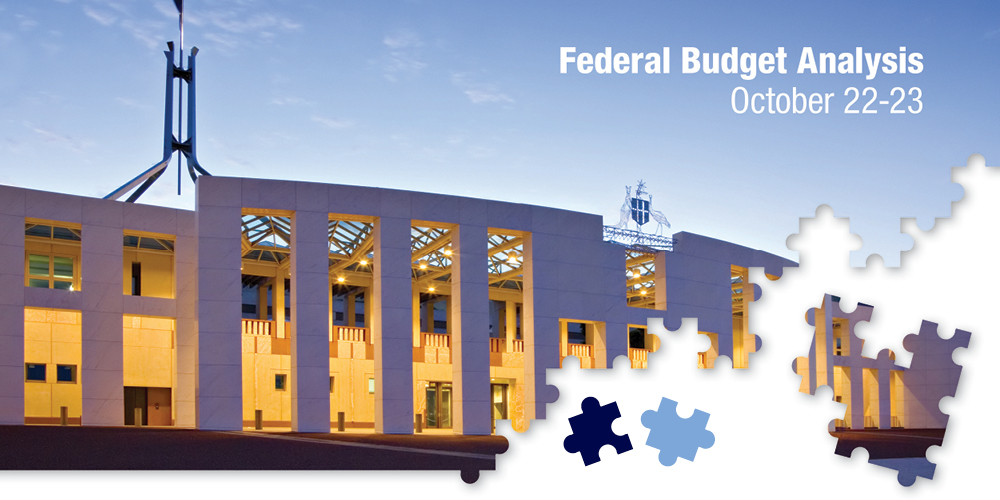It’s December, summer is here and holidays are just around the corner. We take this opportunity to wish you and your family a happy festive season!
The big story on the global economic front continues to be inflation, and how high interest rates will go to tame it. November began with the US Federal Reserve hiking its federal funds target range by another 75 basis points to 3.75-4.00%. There are signs the tough approach is working, with the annual rate of inflation falling from 9.1% in June to 7.7% in October.
In Australia, the Reserve Bank lifted the cash rate another 25 basis points to a decade high of 2.85%. Inflation fell to 6.9% in the year to October, down from 7.3% in September, but remains high and economic signals are mixed. Reserve Bank governor Philip Lowe is keeping a close eye on consumer spending, where higher interest rates are having an impact. Retail trade fell 0.1% in October for the first time this year. And while the ANZ-Roy Morgan consumer sentiment index was up 5.6% to 83.1 points in the last three weeks of November, it remains 22.9 points below the same week last year. But rate hikes are not yet affecting the labour market, with unemployment falling to a 48-year low of 3.4% in October, while annual wages growth rose 1% to 3.13% in the September quarter, the fastest growth in a decade.
The Aussie dollar lifted 3c to around US67c over the month, crude oil prices fell 10% while iron ore lifted 0.5%. Shares remain skittish but positive overall. The ASX200 index rose more than 5% in November while the US S&P500 index was up more than 2%.

Sustainable investing on the rise
Sustainable investing isn’t new and is becoming more mainstream. From climate change to gender diversity, more people are aligning their money with their values.
In 2021, Australia’s sustainable investment market increased 20 per cent to a record $1.5 trillion. The Responsible Investment Association Australasia (RIAA) 2022 benchmark report found sustainable investments represents 43 per cent of total professionally-managed funds.
In addition to traditional shares and fixed interest sustainable investments offer a wide range of assets, including property, alternatives such as forestry, infrastructure, private equity and cash.
Most big super funds offer a sustainable investment option and some offer this as their default option. You can also buy sustainable managed funds, including a growing list of exchange-traded funds (ETFs).
What are sustainable investments?
Focus on people and planet
Sustainable investing is also known as ethical, responsible and ESG (environmental, social, governance) investing, with the focus on people, society and/or the environment.
Sustainable investments are selected using a variety of screening methods, including:
- Positive screening selects the best investments in their class
- Negative screening excludes harmful sectors, companies or activities such as arms, gambling, animal testing, tobacco and fossil fuels
- Norms-based investing screens for minimum standards of relevant business practices
- Impact investing has the explicit intention of generating positive social or environment impacts.i
The term ESG investing is used when a fund or company commits to sustainable investing in these three areas:
- Environmental – air and water pollution, biodiversity and climate change
- Social – child labour and labour standards, ethical product sourcing, gambling and human rights
- Governance – board diversity, corruption, business ethics, corporate culture and whistle-blower schemes.
The report found gender diversity and women’s empowerment are also gaining popularity.
Sustainable investing is not all warm and fuzzy. Performance still matters.
Performance gains
Initially, sustainable investing often came at the expense of returns but that is no longer necessarily the case.
The report compared the performance of what it terms responsible investment funds and mainstream investments funds (on average and net of fees) over the past 10 years to December 2021.
Responsible multi-sector growth funds consistently outperformed mainstream funds and their benchmark over 1, 3, 5 and 10 years. Responsible Australian share funds generally outperformed or were on par with mainstream funds. Only responsible international share funds disappointed, underperforming mainstream funds across all timeframes.
Watch out for greenwashing
Increased demand for sustainable investments has led to a rapid increase in the number of products available. The rush to cash in on the trend has sometimes led to what is known as ‘’greenwashing”. The Australian Securities and Investments Commission (ASIC) describes greenwashing as the practice of misrepresenting the extent to which a financial product or investment strategy is environmentally friendly, sustainable or ethical.
ASIC warns investors to review the product terms. For example, a fund might describe itself as ‘’no gambling” but may invest in companies that earn less than 30 per cent of revenue from gambling.
Look for a clear explanation of how the product will achieve its aims and don’t rely on vague language like “considers”, “integrates” or “takes into account”.
Australian companies lifting their game
It’s not just super funds and managed funds taking sustainable investing more seriously, Australian listed companies are also adapting to changing investor preferences and regulatory environment. A recent analysis of ESG reporting by Australia’s top 200 listed companies, PwC found a 13 per cent increase in companies declaring a commitment to net zero emissions. However, only 55 per cent of those disclosed a transition plan or activities that will enable them to reach net zero.
There was also a 10 per cent increase in companies disclosing climate risks and opportunities, and a 30 per cent increase in companies disclosing a gender diversity policy.
For investors seeking sustainability along with financial returns from their investments, momentum and choice is growing. So please get in touch if you would like to discuss your investment options.

Buying shares for kids: a gift that keeps on giving
Many parents and grandparents worry about how to help the children in their lives achieve financial independence. But the value of long-term investment can seem like a dry and complicated idea for kids to get their heads around.
In fact, many young people would like to know more about money, according to a Young People and Money survey by the Australian Securities and Investments Commission MoneySmart website. The survey found more than half of the 15-21-year-olds surveyed were interested in learning how to invest, different types of investments and possible risks and returns. What’s more, almost all those young people with at least one investment were interested enough to regularly check performance.
One way to introduce investment to children may be to begin a share portfolio on their behalf. The child can follow the progress of the companies they are investing in, understand how the market can fluctuate over the short- and long-term, as well as learn to deal with some of the paperwork required, such as filing tax returns.
How to begin
Setting up a share portfolio doesn’t need to be onerous. It’s possible to start with a minimum investment of around $500, using one of the online share trading platforms. Then you could consider topping it up every year or so with a further investment.
Deciding on which shares to buy comes down to the amount you have available to invest and perhaps your child’s interests.
If the initial investment is relatively small, an exchange traded fund (ETF) may be a useful way of accessing the hundreds of companies, bonds, commodity or theme the fund invests in, providing a more diversified portfolio.
ETFs are available in Australian and international shares; different sectors of the share market, such as mining; precious metals and commodities, such as gold; foreign and crypto currencies; and fixed interest investments, such as bonds. You can also invest in themes such as sustainability or market sectors such as video games that may appeal to young people.
Alternatively, buying shares in one company that your child strongly identifies with – like a popular pizza delivery firm, a surf brand or a toy manufacturer – may help keep them interested and excited about market movements.
Should you buy in your name or theirs
Since children cannot own shares in their own right, you may consider buying in your name with a plan to transfer the portfolio to the child when they turn 18. But be aware that you will pay capital gains tax (CGT) on any profits made and the investments will be assessable in your annual income tax return.
On the other hand, you could buy the shares in trust for the child. While you are considered the legal owner the child is the beneficial owner. That way, when the child turns 18, you can transfer the shares to their name without paying CGT. Your online trading platform will have easy steps to follow to set up an account in trust for a minor.
There is also some annual tax paperwork to consider.
You can apply for a tax file number (TFN) for the child and quote that when buying the shares. If you don’t quote a TFN, pay as you go tax will be withheld at 47 per cent from the unfranked amount of the dividend income. Be aware that if the shares earn more than $416 in a year, you will need to lodge a tax return for the child.
Taking it slowly
If you are not quite ready to invest cash but are keen to help your children to understand share investment, you could consider playing it safe by playing a sharemarket game, run by the ASX.
Participants invest $50,000 in virtual cash in the S&P/ASX200, a range of ETFs and a selection of companies. You can take part as an individual or a group and there is a chance to win prizes.
Another option, for children able to work independently, is the federal government money managed website. This is pitched at teens and provides a thorough grounding in savings and investment principles.
Call us if you would like to discuss how best to establish a share portfolio for your child, grandchild or a special young person in your life.

Celebrating the festive season, the Aussie way
If you’ve ever hosted a visitor from overseas during the festive season you may have seen them a little bemused by the way we celebrate. It’s quite understandable as we do things a little bit differently down under.
Christmas in Australia – while fundamentally a religious festival celebrating the birth of Jesus – is also a melting pot of traditions we have inherited over time, mainly from the northern hemisphere.
Look no further than our Christmas carols, many of our festive songs and imagery reference snowflakes and cosy nights by the fireside. Think of how many of our songs are about chestnuts roasting on an open fire, riding in one-horse sleighs, and building snowmen – even though this kind of imagery is not so appropriate in Australian on a scorcher of a day.
Warm weather traditions
Santa would be much more comfortable in Australia in a pair of board shorts and a t-shirt than his fur trimmed red robes and warm hat. In fact, he has been spotted at Bondi Beach on a few occasions hitting the surf, in the lead up to his busiest time of year.
Instead of playing in the snow, we are playing in the waves, with those who live near the coast hitting the beach for a picnic or game of beach cricket during the festive season.
Prawns on the barbie at lunch
While many still opt for the roast with all the trimmings, Australians have embraced the seafood platter or something they can throw on the BBQ – or better still – seafood on the BBQ. Pavlova and trifle are common alternatives to Christmas pudding. And with no eggnog or mulled wine in sight, a refreshing drink of something icy cold is the Aussie way.
As opposed to the European tradition of having dinner on the 25th of December, we Aussies tend to have a big, long Christmas lunch (preferably with a snooze on the couch after opening all the presents).
Christmas street parties
In the suburbs, entire neighbourhoods organise street parties, getting council permission to close streets to traffic. Barbeques are pulled out onto the asphalt and tables set up with goodies. Kids roam around with water pistols and inflatable wading pools are set up if it’s warm enough, with games organised. Tug of war between the odd and even house numbers anyone?
Carols and pageants
Even though we are singing about snow falling gently and jack frost nipping at our toes, we are usually watching carols on a balmy evening with bats flying overhead in the Botanic Gardens if we are in Melbourne or the Domain Gardens in Sydney.
In Adelaide and Perth millions of kinds have grown up watching annual street parade pageants which liven up the festivities with a carnivale atmosphere and floats, music, and dancing.
Boxing Day sales and the cricket
While the various origins of Boxing Day are not universally agreed upon, the day is traditionally a day of rest after the excesses of Christmas day. It is said to have its origins in England when the wealthy gave their servants a day off and sent them home to their families with boxes of gifts and leftover food from their celebrations the day before.
We don’t tend to have much of a rest on Boxing Day. If we are not hitting the Boxing Day sales or packing up the car to head off on holiday, we are at the cricket. The Boxing Day test is one of the most attended and watched games in the country since its inception in 1950.
The start of summer holidays
Christmas in Australia comes at the start of the summer holidays so the lead up to the festive season also involves workplace break ups and celebrations with colleagues.
Then after the festivities on the 25th are done and dusted it is time to take off for what will hopefully be a nice relaxing break.
Of course, there are many ways to celebrate at this special time of year. We are blessed to live in a vibrant multicultural nation, feeling the influence of other cultures and traditions from all over the globe.
However you choose to mark the occasion, we wish you much joy and happiness in your celebrations.
This Newsletter provides general information only. The content does not take into account your personal objectives, financial situation or needs. You should consider taking financial advice tailored to your personal circumstances. We have representatives that are authorised to provide personal financial advice. Please see our website https://superevo.net.au or call 02 9098 5055 for more information on our available services.

























